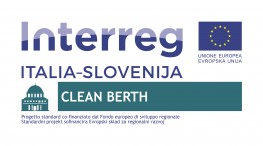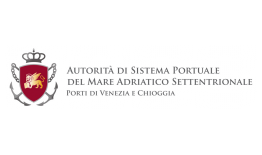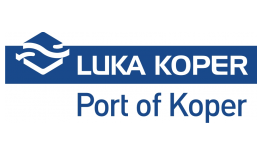Enhancing institutional capacity of public authorities and stakeholders and efficient public administration.

The main objective of CLEAN BERTH was to strengthen the institutional capacity of the ports in the Program Area towards a coordinated and permanent governance in the field of environmental sustainability and port energy efficiency at cross-border level, through developing joint action plans and long-term strategy, by increasing coordination and cooperation among ports to strengthen their sustainability and competitiveness.
The CLEAN BERTH - Cross-border institutional cooperation for ports environmental sustainability and energy efficiency - project ended on 31st August 2022.
At the beginning of the project in 2020 the ports of the Programme area did not have a common model for environmental planning and energy efficiency and adopted non-coordinated mitigation measures with an uneven result in terms of environmental protection. The intention of CLEAN BERTH was therefore to strengthen institutional capacity and cross-border governance of the ports of the Program Area. The aim was to improve their environmental and energy performance. In particular, a model of cross-border plan for environmental sustainability and port energy efficiency was developed and declined through an ad hoc plan for each port (WP3.1) tested in concrete pilot actions, with tangible results (WP3.2). On the basis of what learned in WP3.1 and WP3.2, the ports of the Program Area signed a Protocol for a joint cross-border cooperation strategy and harmonisation of policies in the medium and long term (WP3.3). This will benefit neighbouring citizens and those living in the municipalities where commercial airports are located. No project so far has ever brought together all ports of the Programme Area for a joint cross-border strategy.
The main result that CLEAN BERTH aimed for was the improvement of the collaboration and institutional capacity of the ports of the Program Area in the key theme of environmental sustainability and port energy efficiency, through joint action plans and strategies developed jointly, in a perspective long-term cooperation. CLEAN BERTH aimed to achieve the following specific results: 1) Improvement of port skills in joint planning for environmental sustainability and port energy efficiency, as basis for a long-term change. In particular, a fruitful exchange of experiences and a benchmark analysis provided the staff of all the ports of the Area with a solid knowledge to improve their planning skills; 2) Harmonization of policies and actions to strengthen crossborder environmental sustainability and port energy efficiency. The drafting of a common model of environmental sustainability and energy efficiency plan and its declination for each port as well as its experimentation through concrete pilot actions, created the basis for standardization of environmental protection measures, consolidating sustainability and competitiveness of the ports of the Programme Area. 3) Institutionalization of a cross-border governance of environmental sustainability and energy efficiency. Thanks to the creation of a permanent cross-border institutional platform through the signing of a joint protocol, all ports in the Programme Area undertook to apply a common strategy on environmental sustainability and energy efficiency in a long-term perspective beyond the end of the project.
Lead Partner

Project partner 1
Project partner 2

Project partner 3

Project partner 4

| Brochure - EN brochure clean berth_EN_FINAL.pdf ( 1 byte, published on 5 March, 2021 - 10:09 ) | |
| Newsletter #1 - EN CLEAN_BERTH_newsletter1_EN.pdf ( 452 bytes, published on 5 March, 2021 - 10:09 ) | |
| Consolidated report on current situation D.3.1.2.1 Consolidated report.pdf ( 2 bytes, published on 9 February, 2022 - 09:04 ) | |
| PLAN PORT OF TRIESTE D.3.1.3.2_PLAN AdSP-MAO TRIESTE.pdf ( 1 byte, published on 9 February, 2022 - 09:04 ) | |
| PLAN PORT OF MONFALCONE D.3.1.3.3_PLAN AdSP-MAO MONFALCONE.pdf ( 1 byte, published on 9 February, 2022 - 09:04 ) | |
| PLAN PORTO NOGARO D.3.1.3.4_PLAN_Porto_Nogaro.pdf ( 1 byte, published on 9 February, 2022 - 09:04 ) | |
| PLAN PORT OF VENICE D 3.1.3.5 _PLAN PORT OF VENICE.pdf ( 586 bytes, published on 9 February, 2022 - 09:04 ) | |
| PLAN PORT OF CHIOGGIA D3.1.3.6 PLAN PORT OF CHIOGGIA.pdf ( 586 bytes, published on 9 February, 2022 - 09:04 ) | |
| PLAN LUKA KOPER D.3.1.3.7_PLAN LUKA KOPER.pdf ( 1 byte, published on 9 February, 2022 - 09:04 ) | |
| CROSSBORDER ACTION PLAN D.3.1.3.8_CROSSBORDER ACTION PLAN.pdf ( 1 byte, published on 14 February, 2022 - 12:15 ) | |
| BEST PRACTICE REPORT D.3.1.2.2_REPORT_BEST_PRACTICE.pdf ( 1 byte, published on 28 February, 2022 - 15:48 ) | |
| Newsletter #2 ENG CLEAN BERTH_newsletter 2_ENG.pdf ( 342 bytes, published on 6 May, 2022 - 11:11 ) | |
| Newsletter #3 ENG CLEAN BERTH_NEWSLETTER 3_ENG.pdf ( 518 bytes, published on 23 May, 2022 - 12:15 ) | |
| CROSSBORDER STRATEGY D.3.3.2.1_CROSSBORDER STRATEGY.pdf ( 2 bytes, published on 30 May, 2022 - 10:18 ) | |
| Joint Protocol for permanent cross-border cooperation on environmental sustainability and energy efficiency D.3.3.2.2_CLEAN BERTH_PROTOCOLLO-PROTOKOL_signed.pdf ( 2 bytes, published on 14 June, 2022 - 17:08 ) | |
| Newsletter #4 ENG Clean_Berth_newsletter4_ENG.pdf ( 435 bytes, published on 21 June, 2022 - 13:08 ) | |
| ADSPMAO PILOT ACTION D.3.2.2.1_ADSPMAO_PILOT ACTION_ENG.pdf ( 3 bytes, published on 28 June, 2022 - 12:05 ) | |
| COSEF PILOT ACTION 1 D.3.2.2.3_COSEF_PILOT ACTION 1_ENG.pdf ( 3 bytes, published on 28 June, 2022 - 12:05 ) | |
| COSEF PILOT ACTION 2 D.3.2.2.3_COSEF_PILOT ACTION 2_ENG.pdf ( 7 bytes, published on 28 June, 2022 - 12:05 ) | |
| COLLECTION OF STAKEHOLDER REPLIES CELAN BERTH D.3.3.1.4-5 COLLECTION OF STAKEHOLDER REPLIES.pdf ( 1 byte, published on 25 July, 2022 - 13:14 ) | |
| LK PILOT ACTION D.3.2.2.4_PILOT ACTION LK - ENG.pdf ( 7 bytes, published on 2 August, 2022 - 14:51 ) | |
| PILOT ACTION ADSPMAS D3.2.2.2_PILOT ACTION ADSPMAS.pdf ( 3 bytes, published on 17 August, 2022 - 12:12 ) | |
| FINAL PUBBLICATION D.2.3.1_FINAL PUBBLICATION Clean-berth-Eng.pdf ( 11 bytes, published on 12 September, 2022 - 12:18 ) | |
| PILOT ACTION CONSOLIDATED REPORT CLEAN_BERTH_D.3.2.1.4_PILOT ACTION CONSOLIDATED REPORT_ENG.pdf ( 11 bytes, published on 10 October, 2022 - 10:26 ) |
KEY PROJECT OBJECTIVES
The main objective of CLEAN BERTH was to strengthen the institutional capacity of the ports in the Program Area towards a coordinated and permanent governance in the field of environmental sustainability and port energy efficiency at cross-border level, through developing joint action plans and long-term strategy, by increasing coordination and cooperation among ports to strengthen their sustainability and competitiveness.
CURRENT STATUS OF IMPLEMENTATION
The Project started on 01.03.2020 and ended on 31.08.2022. The project activities are summarised in the following steps.
Study of best practices for environmental sustainability and energy efficiency of ports and Plans for environmental sustainability and energy efficiency of ports in the Programme Area
As a first activity, project partners contributed to the preparation of the inventories of GHG emissions: an important tool for also comparing the quantities of emissions between terminals or ports, consequently identifying the critical issues, adopting the most effective decisions on priority investments and introducing the technological changes useful to reduce them. Based on the calculation of the carbon footprint for each port, the identification and analysis of best practices in terms of environmental sustainability and energy efficiency were then made.
The consolidated report on the current situation allowed each port to develop individual environmental sustainability and energy efficiency plans, which were then grouped into a single cross-border action plan for the strengthening of environmental sustainability and port energy efficiency.
Cross-border Action Plan for Enhancing Environmental Sustainability and Port Energy Efficiency (Output 1) and Evaluation of Pilot Actions (Output 2)
With the aim of achieving a progressive reduction of emission factors in ports, the joint cross-border action plan identifies strategies and activities that will help ports reduce their environmental impact and increase energy efficiency over the next decade. The interventions concern different areas of port activities, ranging from emissions generated by the administrative management of the port to emissions generated by the operation of the port along the entire port logistics chain.
All CLEAN BERTH partner ports have for the first time defined a cross-border plan for environmental sustainability and energy efficiency declined in several pilot actions specific to each port, but able to produce in their entirety significant results in the
green field:
• Port of Trieste - installation of three charging stations for electric vehicles;
• Porto Nogaro - replacement of part of Porto Nogaro's lighting systems with LED technology and
purchase of an electric vehicle;
• Port of Venice - purchase of noise pollution monitoring units and installation of equipment to improve energy performance in port areas and infrastructures
• Luka Koper - purchase of two radar instruments for detecting the presence of pollutants in the sea and installation of charging stations for electric vehicles.
RESULTS ACHIEVED
Protocol for the establishment of a permanent cross-border cooperation system in the field of environmental sustainability and port energy efficiency (output 3)
The next step was the preparation of a 'Cross-border strategy for enhancing environmental sustainability and port energy efficiency' to identify the main challenges in the maritime sector and the general and operational guidelines to jointly and synergistically pursue environmental sustainability objectives.
The importance of cross-border cooperation was also emphasised at the final conference entitled "Green and Smart Ports in the Adriatic-Ionian Region. The contribution of the European territorial cooperation between Italy, Croatia and Slovenia" organised on 8th June 2022 in Trieste by the LP in cooperation with the Friuli Venezia Giulia Region, under the auspices of the European Macro-Strategy for the Adriatic-Ionian Region (EUSAIR) and in collaboration with other projects co-funded by the Interreg Italy-Croatia Programme 2014-2020. At the end of the meeting the CLEAN BERTH project partners signed the "Joint Protocol for permanent cross-border cooperation on environmental sustainability and port energy efficiency", aimed at further strengthening the fruitful cooperation established during the project implementation. The main areas of action will be the exchange of best practices, joint training and awareness-raising initiatives and joint participation in co-financed projects to promote cross-border cooperation in the field of environmental sustainability and energy efficiency. In the coming years, the focus will be on finding new solutions in the field of alternative energy sources for use in port logistics.